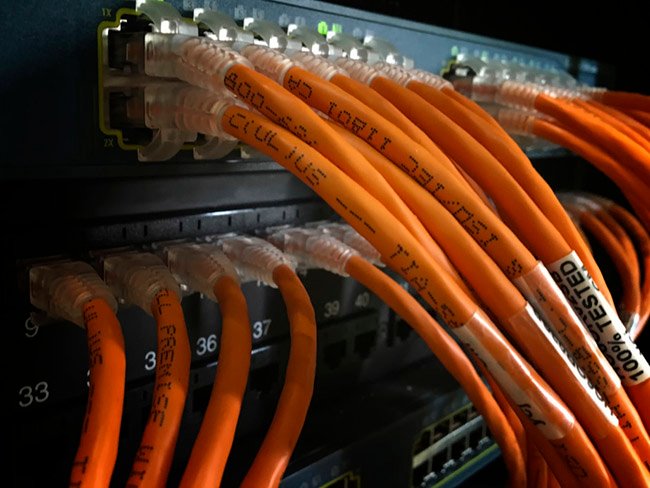A robust and reliable network infrastructure is paramount in today’s fast-paced business environment. CAT6 cabling, known for its enhanced performance and reliability, is popular among businesses looking to upgrade their network systems. This detailed guide will walk you through how a skilled technician wires CAT6 in an office space to ensure optimal data transmission and network efficiency.
Understanding CAT6 Cabling
Before diving into the wiring process, it’s essential to understand what CAT6 cable is and why it’s advantageous for office networks. CAT6, or Category 6 cabling, supports higher bandwidths than its predecessors, like CAT5e. It can handle speeds of up to 10 Gbps at 250 MHz, making it ideal for high-speed data transfer applications such as video conferencing, high-definition video streaming, and VoIP.
Planning and Design
Initial Assessment
The initial site assessment is the first step in wiring an office with CAT6. A technician will evaluate the office layout to determine the best paths for the cabling. This involves identifying key data points, such as workstations, servers, and other network devices, and planning the route from the server room to these points.
Designing the Network Layout
Once the initial assessment is complete, the technician designs the network layout. This includes creating a detailed map of where all cables will run, the location of wall sockets, and the placement of the network rack in the server room. Proper planning helps avoid interference from electrical wires and other potential disruptions to signal integrity.
Installation Process
Running the Cables
The installation begins with running the CAT6 cables from the server room to each designated outlet across the office. Technicians use conduits, cable trays, or ceiling voids to route the cables safely and neatly. It’s crucial to avoid sharp bends and twists in the wires that can damage them or degrade network performance.
Termination
After the cables are laid out, each end must be terminated with RJ45 connectors or a patch panel in the server room. This step requires precision; poor termination can lead to connectivity issues. Technicians typically use a punch-down tool to secure wires into a patch panel and a crimping tool for RJ45 connectors.
Testing and Certification
Once the cabling is in place, each cable run must be tested for performance. Technicians use specialized testing equipment to ensure that each cable meets CAT6 standards for speed and reliability. This may include testing for continuity, resistance, and the absence of cross-talk between the cables.
Documentation and Final Assessment
Labeling and Documentation
Accurate labeling and documentation are vital for future maintenance and troubleshooting. Each cable and termination point should be clearly labeled, and a detailed network diagram should be updated to reflect the new installation.
Final Walkthrough
A final installation walkthrough helps ensure everything has been set up correctly. During this phase, technicians check for physical obstructions, test network connectivity, and ensure that all active components function as intended.
Maintenance Tips
Regular checks and maintenance are recommended to maintain the integrity and performance of CAT6 cabling in an office. This includes inspecting the physical condition of cables and connectors, periodically testing network speed and reliability, and ensuring that environmental factors like humidity and temperature are within safe limits.
Conclusion
Installing CAT6 cabling in an office requires careful planning, precision, and technical know-how. By following the steps outlined above, technicians can ensure a high-performing network that supports the needs of modern businesses. With its capacity for high-speed data transmission and improved network efficiency, CAT6 cabling is an intelligent investment for any company looking to future-proof its network infrastructure.
This guide informs and assures businesses that with the proper professional handling of their network cabling, they can expect robust and reliable network performance that will support their operational needs for years to come.
In the digital age, staying ahead in business requires keeping pace with technological advancements and strategically leveraging them to your advantage. Fiber optic networking is not the future technology—it’s today’s technology. Contact Progressive Office Cabling today to explore how fiber can transform your business connectivity, propelling your operations to new heights of efficiency and success.

